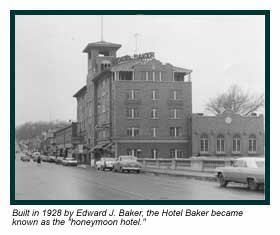Edward Baker was given the honorary title of "Colonel" by a Kentucky governor for his love and care of fine racing horses. At 40, he inherited the Gates fortune. In addition to his visible contributions to the city, in 1928 he brought the tourist industry to new heights with the construction of the Hotel Baker. The Hotel, combined with other attractions like the scenic river views, the Arcada Theatre, and the abundant parks and activities, changed St. Charles into a weekend resort town.
The opening of the Hotel Baker on June 2, 1928 was celebrated with a banquet in the ballroom for over 300 people. The "honeymoon hotel" was a favorite getaway spot for many urbanites in the 1920s and 1930s. "Colonial" Edward Baker purchased the site in 1926 and began the construction of the unheard of $600,000 hotel. At the 1933 World’s Fair in Chicago, the Hotel was advertised as one of the best places to stay in the area. Baker resided in the penthouse of the Hotel until his death in 1959.
Local contractors and materials were used to build the hotel, which boosted the economy of the town. In addition, St. Charles experienced a business boom due to the Hotel because of the shops, tourists, and wealth that poured into the small town. In 1926, accommodations started at $2.50 a night and increased to $6.00 by 1947.
A main attraction for the Baker was the famous "Rainbow Room," a two-story oval ballroom surrounded by a balcony. It earned its name from the dance floor which had 2,620 red, green, yellow, and blue lights beneath 300 glass blocks. At that time. the dance floor was one of only three lighted glass floors in the world. The lights could synchronize with the beat of the music, or produce pictures such as a heart, flag, star, or Christmas tree.
The Rainbow Room of the Baker drew top-notch entertainers. Louis Armstrong, Tommy Dorsey, Guy Lombardo, Lawrence Welk, and Eddie Duchin were among the talents to have graced the floor and entertained huge crowds every night. The music from the Baker was piped across the river into the Municipal Building during the 1940s.
Another attraction of the Hotel was the resort feeling that patrons got from the town. This was due its proximity to the Fox River, and its access to Pottawatomie Park and the Arcada Theatre. The Hotel was designed to have an extensive park along the river. When this did not materialize, Baker laid out a beautiful garden behind the Hotel. After dinner in the Hotel, guests could enjoy a quite evening and view thousands of roses, tulips, and other fragrant flowers. Lanterns illuminated the walkways out to the boat house where people sat under colored umbrellas and watched the river. A rock garden and pond surrounded by statues of animals and gnomes sat picturesque next to the river. For the sports advocate, there was a small putting green for golfers to practice their skill.
After the World’s Fair in 1933, the Board of Directors of the Fair gave Baker three Venetian gondolas. These boats were stored in the boathouse and were seen on the river dawned in candle "fairy lights." Guests could rent the gondolas, complete with singing gondolier, nightly at the Hotel.
Famous guests of the Baker included: John F. Kennedy, Gerald Ford, Jim Thompson, Everett Dirksen, Adlai Stevenson, Edmond Muskie, Charles Percy, Richard J. Daley, Billy Graham, Len O’Conner, Jeanette MacDonald, Mary Martin, Edward Arnold, Edgar Bergen, Tommy Dorsey, and Lawrence Welk. Many of the entertainers were performing at the Rainbow Room or the Arcada Theatre. In addition, because Baker was a staunch republican, politicians stayed at the Baker as the hotel was considered the headquarters for the republican party.
Visitors arrived by chauffeur or airplane. The latter flew into town on the Central Airway Corporation which offered 15 minute trips between an airstrip west of town and a Chicago airport. The flights cost $30 round trip and were often greeted by Baker himself.







